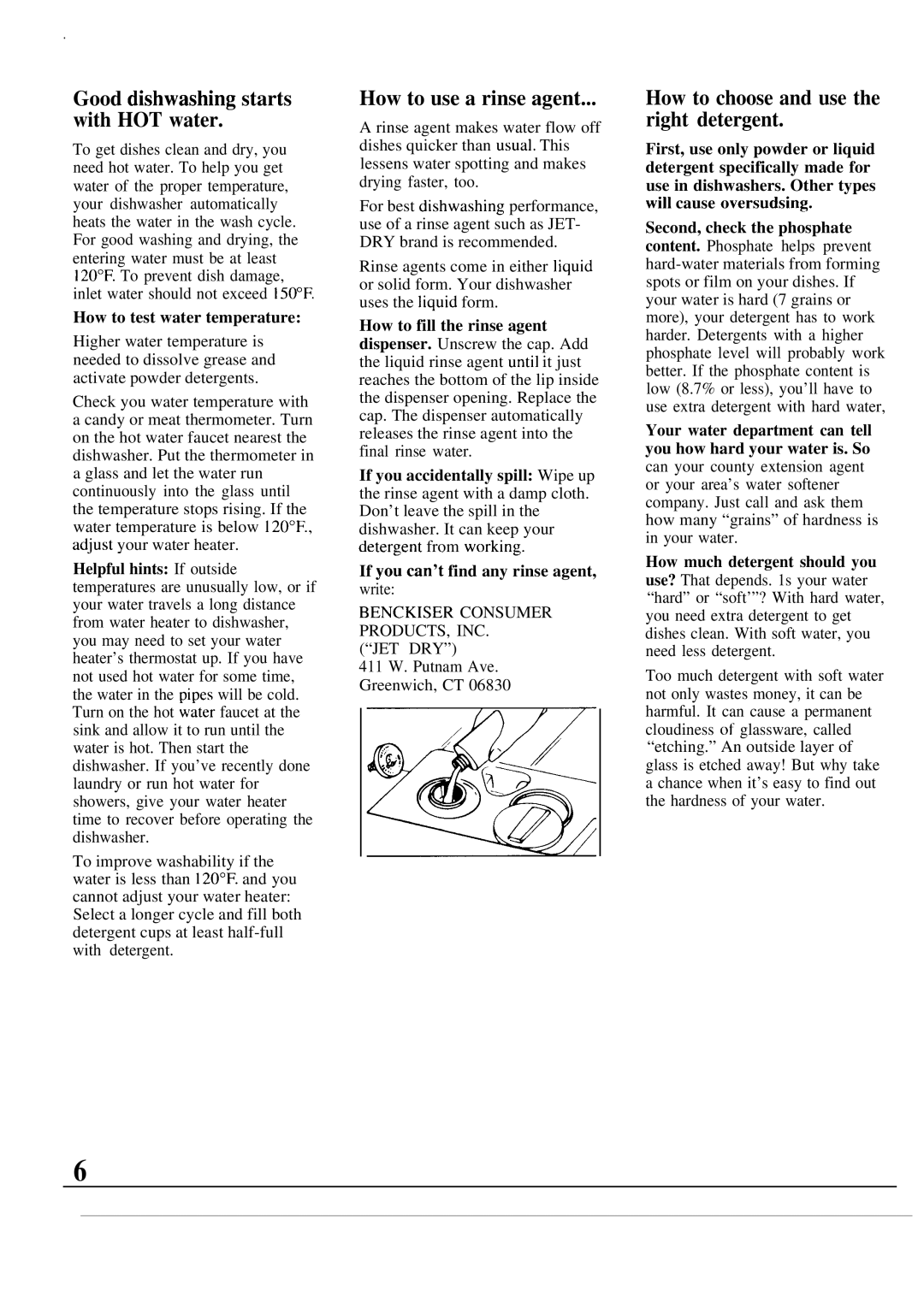GSD630 specifications
The GE GSD630 is a cutting-edge dishwasher designed to elevate the dishwashing experience with a blend of efficiency, sophistication, and advanced technology. This appliance stands out not only for its sleek design but also for its impressive array of features that cater to modern households.One of the standout characteristics of the GE GSD630 is its spacious interior, which can accommodate a significant amount of dishes, pots, and utensils in a single load. Its adjustable racks and multiple loading configurations allow users to customize the interior space according to their needs, making it an ideal choice for families and those who entertain frequently.
The dishwasher is equipped with GE’s signature Wash System, which utilizes advanced filtration and multiple wash arms to ensure a thorough clean. The high-efficiency spray arms provide targeted cleaning, reaching every corner of the appliance, while the powerful motor enhances water circulation for effective dirt and residue removal. This system not only ensures superior cleaning performance but also conserves water, making it an environmentally friendly option.
Another notable feature of the GE GSD630 is its selection of wash cycles and options. With various settings designed for different types of loads, users can choose from options such as heavy-duty, normal, light, and quick washes. This versatility allows for tailored cleaning, ensuring that even the most delicate items receive the appropriate care while tougher dishes get the scrubbing they need.
Moreover, the dishwasher operates at a quiet decibel level, thanks to advanced sound insulation technology. This means that users can enjoy a peaceful home environment even while the appliance is in operation, making it suitable for open-concept living spaces.
Additionally, the GE GSD630 incorporates smart technology that enables users to monitor and control the dishwasher remotely via a smartphone app. This connectivity offers convenience and flexibility, allowing homeowners to start or pause cycles from anywhere, ensuring dishes are washed on their schedule.
In terms of energy efficiency, the GE GSD630 is ENERGY STAR certified, which guarantees that it meets strict energy efficiency guidelines set by the U.S. Environmental Protection Agency. This certification not only helps reduce utility bills but also promotes sustainability.
In summary, the GE GSD630 dishwasher combines a spacious design, advanced cleaning technologies, customizable wash options, quiet operation, and smart connectivity features. It stands as a reliable and efficient addition to any modern kitchen, providing users with the convenience and performance they need for daily dishwashing tasks.

